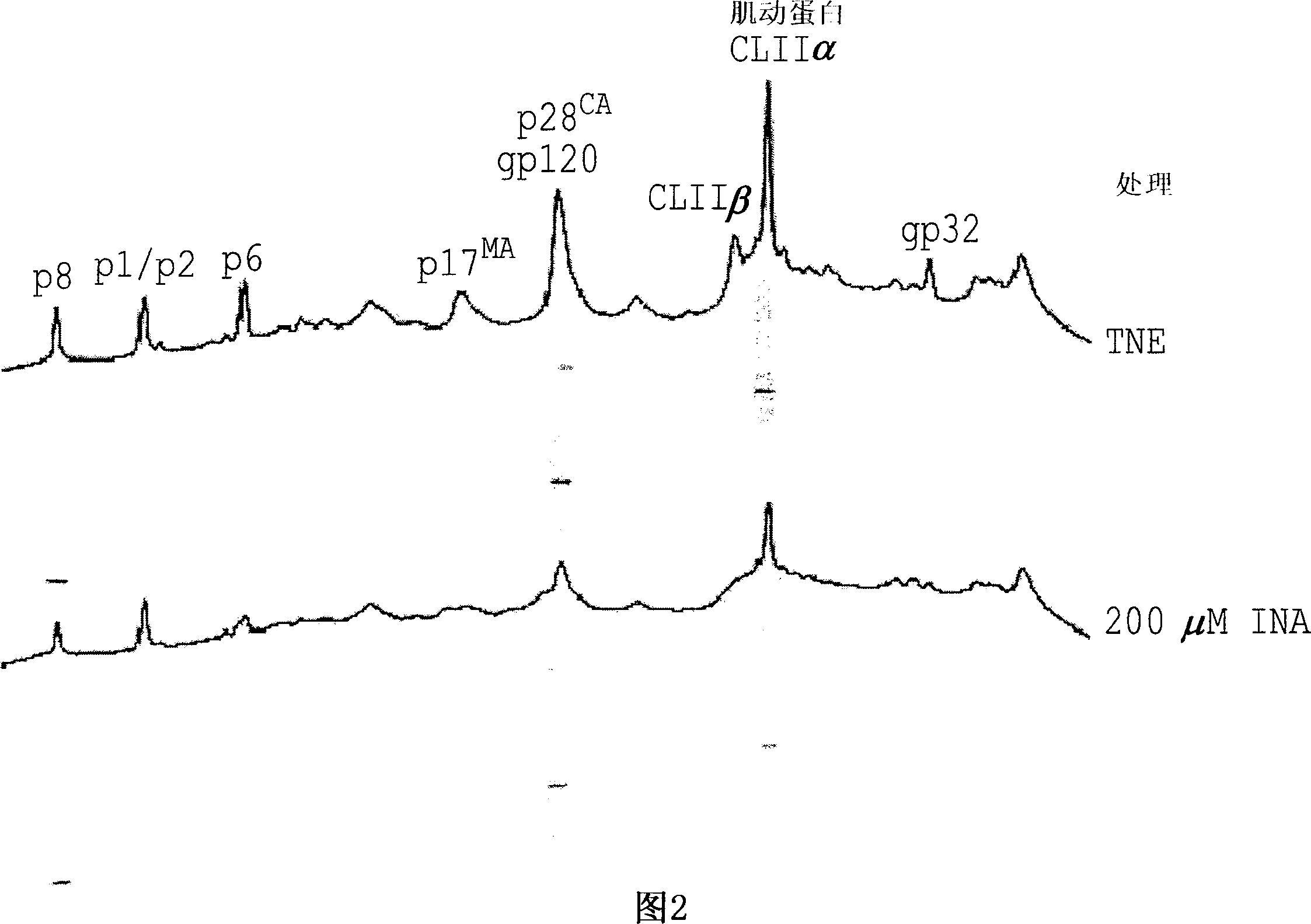Cellular and viral inactivation
一种病毒、灭活的技术,应用在病毒、抗病毒剂、病毒/噬菌体等方向,能够解决困难等问题
- Summary
- Abstract
- Description
- Claims
- Application Information
AI Technical Summary
Problems solved by technology
Method used
Image
Examples
Embodiment 1
[0095] Example 1: Exemplary Materials and Methods
[0096] This example provides some of the reagents and methods used in several of the experiments described herein.
[0097] Material
[0098] Antibodies and their sources are as follows: anti-HLA-DR IgG L243 (mAb, from Elena Chertova), anti-HLA-DR IgG DA6-147 (mAb, from Paul Roche), and anti-Gp32 IgG (rabbit polyclonal antibody, from Raoul Benveniste ). [ 125 I] INA (300 mCi / mmol) was purchased from Lofstrand Laboratories (Gaithersburg, MD). All other biochemical reagents used were of the highest purity available and were obtained from reputable commercial sources.
[0099] Virus
[0100] As previously described (Ott et al.1995), HIV-1 MN / H9 clone 4 was expanded in H9 cells. SIVmne was obtained from the supernatant of a cloned E11 S cell line derived from a culture of HuT-78 cells infected with SIVmne (Benveniste et al. 1990). Concentrated virus preparations were generated by sucrose gradient zonal centrifugation in ...
Embodiment 2
[0115] Example 2: INA-treated SIV fails to fuse with mammalian cells
[0116] The experimental results described in this example demonstrate that INA treatment inactivates viruses but leaves them substantially intact. However, such treatment inhibits fusion of the virus with the host cell and inhibits viral infection.
[0117] Figure 1 shows a Coomassie blue stained SDS-PAGE gel showing that treatment of SIV virions with INA does not substantially alter the molecular weight of viral proteins. As shown, compared with untreated virions (DMSO) and virions treated with TNE (0.1M Tris HCl, 0.1M Tris NaCl, 1 mM EDTA) or 200 μM INA but not illuminated, the concentration range from 2 μM to 200 μM Exposure to INA essentially caused no change in the pattern of SIV protein segregation. Similar results were obtained when the experiment was repeated with HIV. These results indicate that INA treatment preserves the integrity of most viral proteins.
[0118] However, as shown by reverse ...
Embodiment 3
[0125] Example 3: INA-treated HIV is transcriptionally inactive in mammalian cells
[0126] This example describes experimental results showing that INA treatment inactivates the transcription of human immunodeficiency virus, thereby further demonstrating that INA treatment inactivates HIV.
[0127] Infectivity assays were performed using a luciferase reporter gene assay essentially as described in: Spenlehauer, C., Gordon, C., Trkola, A. and Moore, J. (2001) Virology 280, 292-300; and Wei, X., Decker, J., Liu, Z., Zhang, Z., Arani, R., Kilby, M., Saag, M., Wu, X., Shaw, G., and Kappes, J. ( 2002) Antimicrobial Agents and Chemotherapy, 46, 1896-1905.
[0128] Briefly, JC53BL cells, which express luciferase under the transcriptional control of the HIV long terminal repeat (LTR), were used. Upon HIV infection, the TAT protein from the virus binds to the LTR to induce luciferase expression. Expression levels of luciferase can be assessed by incubating samples with a luciferase...
PUM
 Login to View More
Login to View More Abstract
Description
Claims
Application Information
 Login to View More
Login to View More - R&D
- Intellectual Property
- Life Sciences
- Materials
- Tech Scout
- Unparalleled Data Quality
- Higher Quality Content
- 60% Fewer Hallucinations
Browse by: Latest US Patents, China's latest patents, Technical Efficacy Thesaurus, Application Domain, Technology Topic, Popular Technical Reports.
© 2025 PatSnap. All rights reserved.Legal|Privacy policy|Modern Slavery Act Transparency Statement|Sitemap|About US| Contact US: help@patsnap.com



